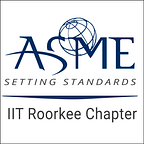Multiphase flow Modelling — a new Genre
Researchers have developed a novel mathematical technique that significantly reduces the computational costs of modeling fluids that are a combination of both liquid and gas phases, particularly within rocket engines. This type of modeling, known as “multiphase flow,” is extremely widespread and occurs anywhere there may be a breakup of liquid droplets and a change in their phase, such as evaporation, boiling, condensation, and cavitation (the formation of small vapor-filled cavities within a liquid, i.e., bubbles). It is vital to study multiphase flow in industries like the oil and gas industry and rocket engines because the collapse of vapor bubbles can produce shockwaves that can cause wear and tear on machinery or infrastructure.
Challenges
Modeling multiphase flow is challenging because it involves quantifying the distribution of velocities of different phases and how these velocities change at the interface between them. There are currently two main methods for modeling multiphase flow, the Euler-Lagrange method and the Euler-Euler method, but both have limitations and are computationally expensive. The Euler-Lagrange method, for example, expresses the liquid phase as a collection of particles, which means it cannot analyze gas-liquid interfaces or primary atomization (the process of change from a bulk liquid to droplets).
With advances in computing power in the 1990s, researchers were able to move from simplified one-dimensional representations of multiphase flow to more realistic three-dimensional models. However, even with these advances, modeling multiphase flow remains computationally expensive and can be financially costly in some cases, particularly for the high degree of complexity within rocket engines. To address these challenges, researchers have focused on developing mathematical solutions for modeling both sound waves and compressible flows, which involve cavitation.
Improvements
The new technique developed by researchers aims to improve the accuracy and efficiency of multiphase flow modeling by using a hybrid approach that combines the Euler-Lagrange and Euler-Euler methods. This hybrid approach allows for the analysis of gas-liquid interfaces and primary atomization, which were previously not possible with the Euler-Lagrange method alone. It also reduces the computational costs of modeling compressible multiphase flow, which is particularly important in rocket engine research.
Conclusion
Overall, the new technique provides a promising solution for improving the modeling of multiphase fluids, which is essential for understanding how shockwaves in these fluids can cause wear and tear on machinery and infrastructure. The results of this research were published in the Journal of Computational Physics and have the potential to have significant impacts on various industries that rely on the accurate modeling of multiphase flow.
